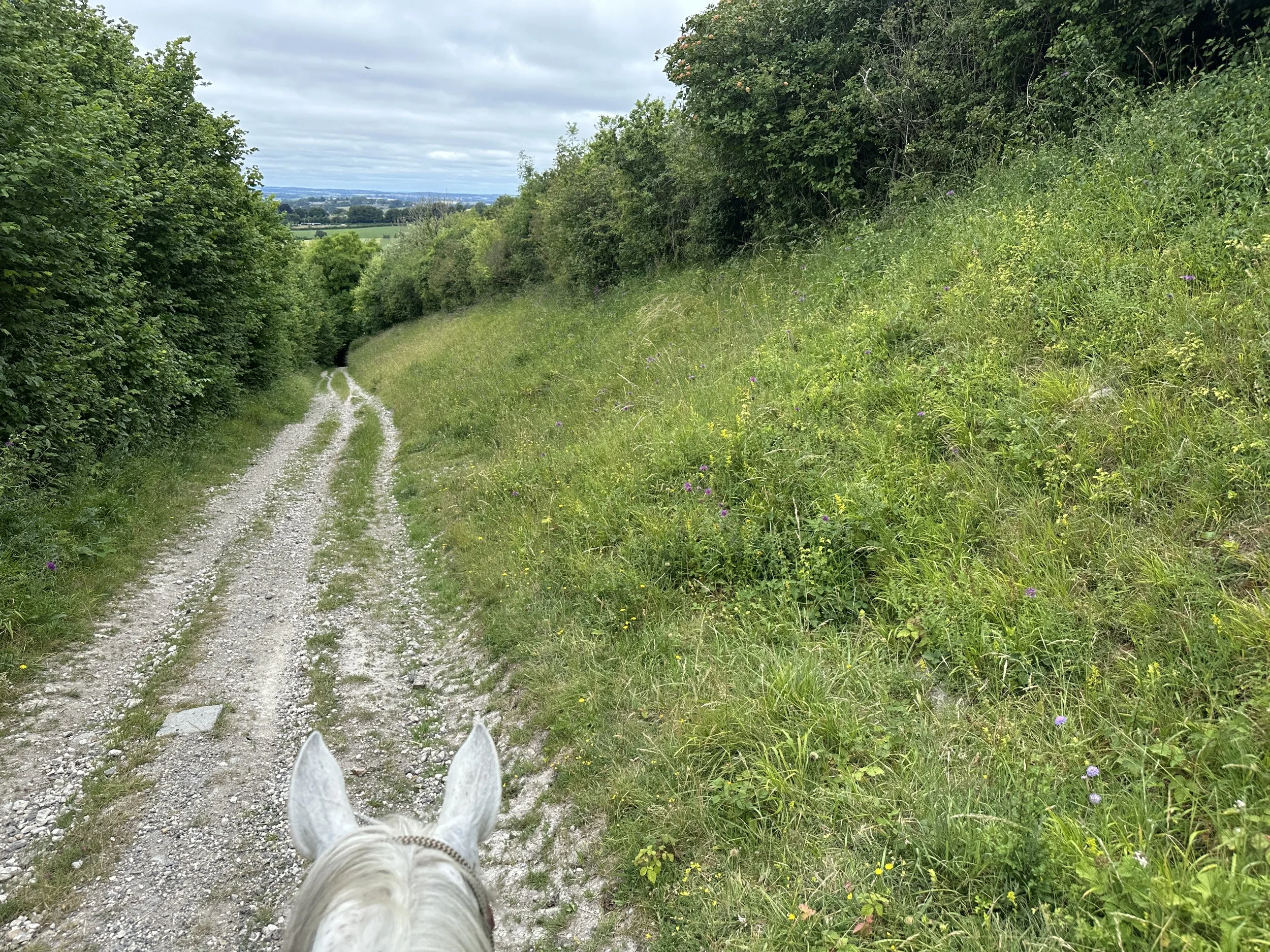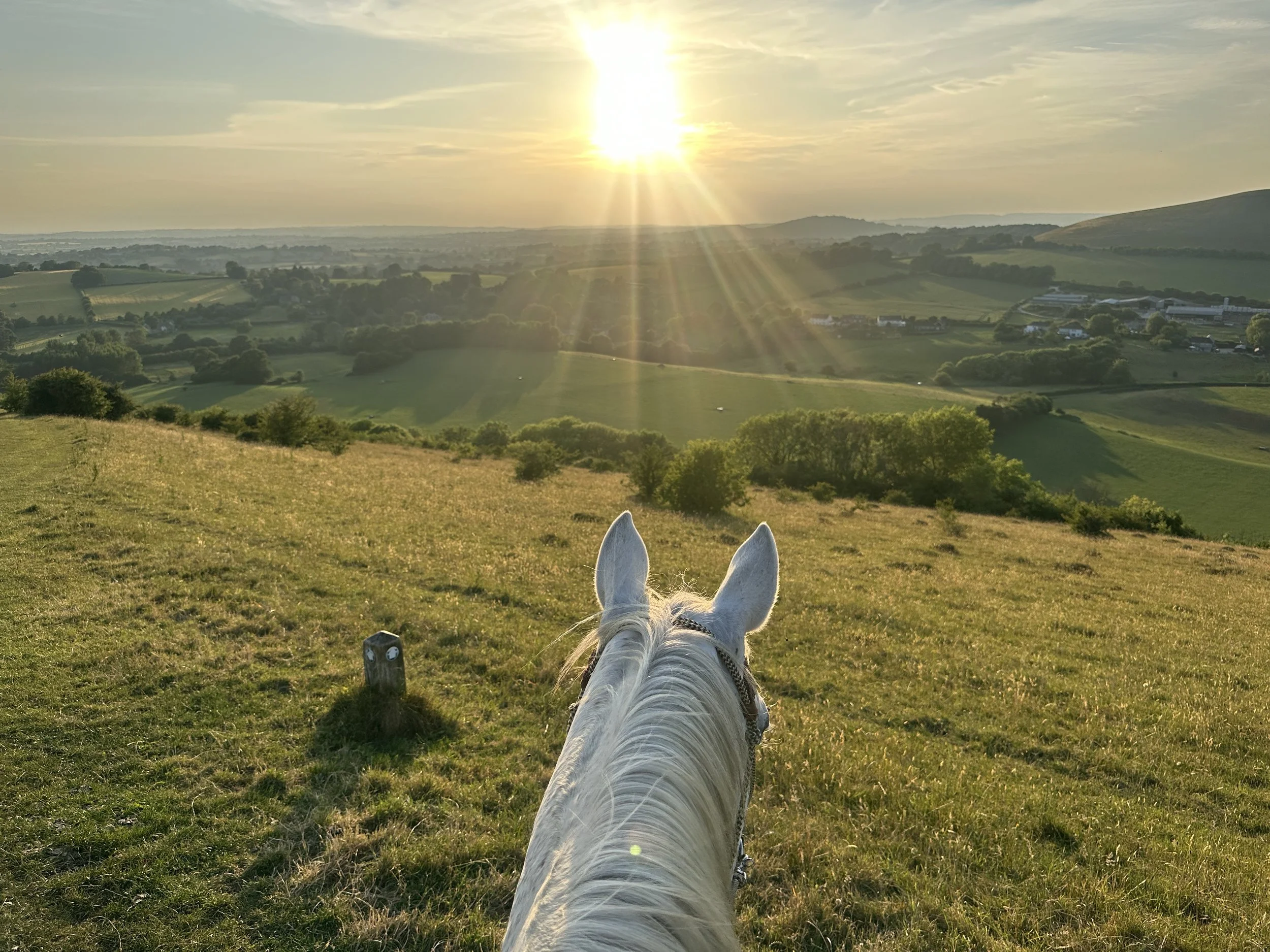Our Downlands and wildlife
Fontmell and Melbury Down is a Site of Special Scientific Interest, lying in the Cranborne Chase Area of Outstanding Natural Beauty. It has been designated a European status of Special Area of Conservation in respect of large numbers of the rare and endemic early gentian flowering in May. Partly owned by the National Trust, but entirely managed by Dorset Wildlife Trust, Fontmell Down is a 64ha mix of chalk downland, scrub and woodland, which provides a huge variety of wild flowers, including 9 orchid species, 35 recorded butterfly species and many birds. We have an abundance of wildlife on our downlands. Red Kites soar the air, as well as Kestrels, Skylarks and Buzzards.
Right from the doorstep, you can embark on many circular walks across the chalk downland. It's a fantastic place to spot butterflies and orchids, which thrive here. We have many guests come to visit from afar, specifically to visit the Downs for their array of insects, including rare species such as the Glanville Fritillary butterly. Glanvilles are generally restricted to the Isle of Wight, but one of their key sites is Compton Down, right on our doorstep! We also have Adonis Blue and Chalkhill Blue butterflies.
An intersting fact
“The Glanville Fritillary is named after Lady Eleanor Glanville, a 17th century Lepidopterist who discovered this species in Lincolnshire. After her death, one of her sons contested her will on the grounds of lunacy, as eloquently described by Moses Harris in "The Aurelian" in 1766: "This Fly took its Name from the ingenious Lady Glanvil, whose Memory had like to have suffered for her Curiosity. Some Relations that was disappointed by her Will, attempted to let it aside by Acts of Lunacy, for they suggested that none but those who were deprived of their Senses, would go in Pursuit of Butterflies".
Ancient chalk grassland is now very rare. In the last 70 years it is estimated that 80% of Britain’s chalk grassland has been lost. A well-managed chalk downland, such as Fontmell Down, can contain 50+ species of wild flower in a single square metre. They were created by man in the Bronze Age, during the forest clearance. Thin soils on the slopes made ploughing impossible, so the downs were grazed with sheep and other animals, producing the species-rich grasslands we see today. Chalk grassland needs to be managed otherwise it will be invaded by scrub and trees. A mixture of local organic grazing animals and manual cutting on rotation is applied on Fontmell Down, which is managed by: Dorset Wildlife Trust.
On Compton Down and Melbury Hill and you will find one of the best displays of glow-worms during June and July (if the weather is good). Melbury Hill, meanwhile, marks the high point of a spur, offering sweeping views across much of the downs. The Melbury Beacon is located 863 feet above sea level and reaching it rewards walkers with wonderful views to the north of the Saxon town of Shaftesbury and across to the surrounding counties. Nearby Melbury Down is a dry valley that cuts the ridge of Cranborne Chase and straddles the counties of Dorset, Hampshire and Wiltshire.


